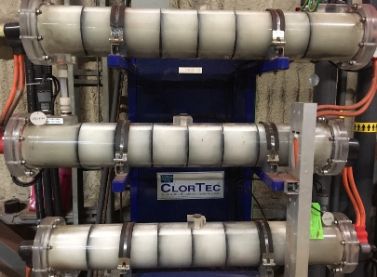Cyanide has been used in the process of mining gold since 1887. But when a dam burst at a gold mine in northwestern Romania in 2000, contaminated wastewater poured into tributaries of a major waterway in Hungary, threatening the people, animals and environment of Serbia, Bulgaria, and Romania.
The historic catastrophe and subsequent ban of cyanide in parts of the U.S., Europe, and South America, prompted the mining industry to begin researching alternative solutions to the use of cyanide when mining gold and other metals. Chlorine has emerged as a safe, effective, and environmentally sound solution to the problem.
Dr. Jean-Marc Lalancette is co-founder and Chairman Emeritus of Dundee Sustainable Technologies (DST), which focuses on the development and commercialization of environmental-friendly technologies for the treatment of materials in the mining industry. Dr. Lalancette leveraged his significant industry experience to transform standard extraction methods, developing and testing a groundbreaking hydrometallurgical process for the extraction of base and precious metals from ores, concentrates, and residues. Key to this revolutionary approach is the use of chlorine and bromine as hypohalides, and the introduction of hypochlorite, an ion composed of chlorine and oxygen, most commonly used as the active ingredient in household bleach. Chlorine and a catalytic amount of bromine combined as oxidizing agents deliver a particularly fast reaction with gold, with only a small concentration of bromine required in the brine. Chlorination also emerged as an ideal option based on the relatively low temperature of the reaction with a wide variety of minerals.
A closed-loop circuit is an important feature of DST’s design, preventing the generation of liquid effluents and eliminating the need for expensive tailings ponds. The tailings from the process are inert from toxic substances, free of sulphide, and do not produce acid leach, making it an extremely environmentally-safe process. It only requires a brief contact time of about one hour to give high gold recovery.
DST set up a demonstration plant at Thetford Mines in Quebec, Canada in 2013. Using gold concentrate provided by its partner in Chile, DST was able to evaluate the effectiveness of its technology in a live setting. The company requested proposals from a number of suppliers for on-site sodium hypochlorite generation (OSHG) systems to produce the hypochlorite that is so critical to the process. De Nora, a leading designer of safe, innovative, and sustainable water disinfection, oxidation and filtration technologies, was among those considered.
“De Nora stood out to us among the field of vendors because the company was truly interested in partnering with us, not simply acting as a vendor,” said Dr. Lalancette. “They recognized the innovation we were creating, especially through the use of bromine, and wanted to be part of it.”
De Nora delivered and installed two of its ClorTec® OSHG systems to the demonstration site, working through Canadian-based service provider Provan. Each system included a hypochlorite generation capacity of 600 pounds per day, along with the related storage tanks. In the on-site generation process, salt is combined with water to produce a saturated brine solution which is mixed with softened water and fed to an electrolyzer. A dc electrical current is applied to the electrolytic cells to generate the hypochlorite solution. Unlike typical installations, the two units were used in a series in order to produce the hypochlorite at the key 2% level, rather than the usual .8-1% level. A service representative travelled and stayed on site for three days to ensure the proper operation of the systems and make any adjustments needed.
“Our requirements demanded modifications to the instrumentation and automation in order to function in a series, and still keep important safety features intact,” said Dr. Lalancette. “The De Nora team was excellent to work with and adapted to our very specific needs perfectly.”
The demo plant consistently produces positive results in the efficient extraction of a variety of materials. Working at a rate of 15 tons per day of mineral concentrate, the plant demonstrates the following yields:
- Sulfide: 99.4%
- Mercury: 98.7%
- Copper: 95%
- Gold: 94.9%
The environmental advantages of this revolutionary process are significant; not only does the process avoid the hazards of cyanide, but it also eliminates the need for tailings ponds and reduces water usage and overall process footprint. In fact, DST achieved third-party certification through Environment Canada’s Environmental Technology Validation (ETV) program for this cyanide-free gold extraction process. After testing on more than 200 types of ore, DST is confident in the cost and time benefits of its innovative use of chlorination for extraction, including in the recovery of base metal in gold ores.


